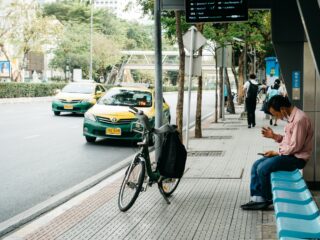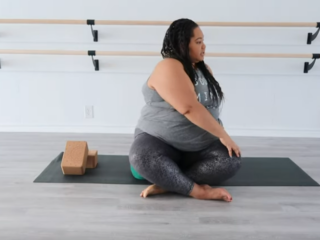
The Collective STL is a 501c3 nonprofit located in St. Louis, Missouri whose mission is to provide our citizens with mental health services of the highest quality for all people regardless of their income level, race or ethnicity
The “the collective stl app” is a new app that allows users to create their own custom workouts. The app has features like fitness tracking, nutrition tracker, and more.
The Collective STL is a donation-based 501(c)3 non-profit yoga and wellness space in the center of Old North St. Louis, Missouri. Since 2018, this place has given mental wellbeing via trauma-informed, culturally conscious programs. Tune in to Home Practice with Halle: Yoga Tools for Every Body on your preferred podcast platform to hear the entire conversation with Dr. Terry Harris, yoga teacher, educator, storyteller, and co-founder of The Collective STL. Follow @thecollectivestl on Twitter and https://www.thecollectivestl.org/ on Facebook, or watch The Collective STL on YouTube.
Halle: Hello, everyone. Dr. Terry Harris of The Collective, St. Louis, joins me today as a yoga instructor, educator, storyteller, and entrepreneur. Thank you very much for coming today, Terry. Tell us a little bit about yourself and how you came to start practicing yoga.
Terry: Without a doubt! You’ll definitely have to cut me off because I’m a storyteller [laughs]. My hometown is St. Louis, Missouri. I graduated from college with a history degree and began working in teaching. I fell in love with young people and the entire business of teaching, learning, and listening to them, and I realized that they come with all these distinct characteristics that make sitting with them so enjoyable. At the same time, you can see how stressed up young people are. You’ll also notice instructors that are overworked. It was an awful circumstance that brought me to yoga. My first student, whom I met via a summer program and who inspired me to pursue a career in teaching, died. And, with that amount of tension, that sensation of ‘woah, this isn’t right,’ someone suggested I try yoga. I attended to a Jewish Community Center class. Since then, I’ve been experimenting with it and practicing various yoga methods. ‘How can I become a yoga teacher so that I may bring this practice to young people in the St. Louis area?’ I wondered. ‘How can I teach this technique to Black folks in St. Louis?’ eventually became the question. That’s how I came to be here. The Collective began three years ago.
H: The Collective is a 501(c)(3) organization, which means it is a non-profit, donation-based Yoga and Wellness facility in St. Louis, and it is the only one of its kind in Missouri. Can you tell us a bit more about what went into the concept for this studio, and if you ever had to choose between a for-profit and a non-profit entity?
T: Thank you for mentioning it. We are a 501(c)(3) charitable organization. Here’s what we made very clear: St. Louis, like many other cities, is racially divided. There are many levels of segregation. Nearly 90% of residents on St. Louis’ North Side are African-American. You also have a significant amount of poverty. As a result, we made it a priority to ensure that those folks had access to yoga, even if we knew they couldn’t afford a $25 session. When you actually think about money, there are relatively few grocery shops in North St. Louis, and many get their food from gas stations. When you consider that there are no healthy food alternatives, that the air is very filthy, that there are condemned buildings… when you consider what poverty looks like, this is the neighborhood. And then you’re going to ask those people to pay $25 for a procedure they have no knowledge of? No.
As a result, opting to be a charity was the most straightforward aspect of the business strategy. Because we wanted to expose people to their breath, we wanted to make sure it was a donation-based event. We wanted to reacquaint individuals with their own bodies. We wanted to build a place where people could relax and unwind without having to worry about anything. The strategy worked. We’ve been in the business for three years. We try to write a lot of grants, we have organizations who contribute money because they enjoy what we’re doing, and our practice participants make sure that we have enough money to pay our expenses.
H: Aside from the fact that money isn’t an impediment or a barrier to wellbeing, what else would you say The Collective’s objective or mission is?
T: The Collective’s aim is to provide health and wellness to the Black community in St. Louis, period. So, how does it look? Space, Community, and Yoga are the three legs of The Collective, the three pillars that hold us up. We constantly tell people when we go out and speak about The Collective that it’s a love story in the making. It’s a love tale about the individual, a love story about community, and a love story about the city. It’s a true love tale situated in the realm of health and wellness. Every time I think about it, I smile—to suggest that The Collective is a love tale gives delight to my heart, because I know it is. Our folks are aware of this.
When we tell individuals about The Collective, they may respond things like, “I don’t know how to perform yoga.” I’ve never done yoga before.’ All of these yoga facts! “Do you appreciate welcome room, a warm area?” we simply ask. “Is there a place that makes you feel good?” ‘I adore it,’ says the speaker. “Do you like being in a connection with others, being a part of a community, hanging out with your friends, and having excellent conversations?” ‘Oh, yes,’ says the speaker. “And what about food?” “Do you like eating?” ‘I adore it,’ says the speaker. “That’s OK, come to The Collective because we do both of those things, plus yoga.” Yoga is placed last on purpose. Because we’re aiming to reach out to a group of people who may have preconceived notions about yoga, it dispels those anxieties and focuses on what we know all humans crave: connections. We’ll focus on the first two legs of Space and Community, and then we’ll move on to Yoga.
As part of their endeavor to deliver long-lasting, high-quality yoga gear to their community, The Collective STL shows off their recently finished Manduka customizing project.
H: Let’s discuss about the studio’s food policy.
T: We always provide fresh fruit and vegetables at the conclusion of every yoga lesson. We collaborate with a local farm, who generously donates this fresh produce. At the conclusion of class, we distribute this to our pupils, and anybody may take what they need. It’s a great sense of community, and it’s fascinating to see everyone eating veggies I’d never heard of before. People chop it up, taste it, and then share their recipes. The Collective has a lot of levels, so we’re quite deliberate about it. In the location where we reside, you don’t have access to nutritious food. You just don’t. One of our trainees is a farmer, and the farm is just a few blocks away from the studio. “Here you go!” he said after introducing us to the proper individual. Come out to the farm and lend a hand.” So, certain members of The Collective assist with agricultural chores, and that was the end of it.
H: As part of the healing space, you also use restorative justice and circles. Could you tell me a little bit more about those practices?
T: You’re right. At its most basic level, restorative justice is about two things: creating connections and mending damage when it occurs. What does it look like in terms of yoga? I’ve gone to several yoga classes, paid my money, and no one has ever spoken to me. Not even a person who works at the front desk. I was left to locate my own location once they took my money. And then there’s the question of “Am I not meant to be here?” Is this a female-only class? Is this a class for advanced students only?” That isn’t how you establish connections, and I’m going to start my practice with some risk. What does it feel like in my body, in my movements?
We start class in a circle, pass a talking piece, and offer our emotional weather report on occasion. All of the voices in the room are audible to us. You get to know a lot of people. We are being deliberate to ensure that we are not causing more damage to the community we are attempting to mend. There are places and groups that claim to be therapeutic, yet their whole model and relationship is really harmful. That is something we do not wish to do. The first principle we teach is Ubuntu, which is an African philosophy that translates to “I am because you are.” Because I am, you are.” If you ask me, this is the most fundamental level of restorative justice. It implies that we are one and the same, and that we are linked. There is no more powerful connection than that philosophy.
The Collective STL is about health and wellness, but it’s also a love tale about self-love, community love, and city love.
H: Tell me about how narrative plays a part in your teaching method.
T: According to Maya Angelou, there is no deeper sorrow than a tale that is never shared. Every single one of us has a story to tell when we go into yoga class. We can watch the tale unfolding via your movement. I include historical details, a quotation, or anything that someone tells me that I’ll share. Alternatively, I may have others tell tales, or I might finish class five minutes early and ask if anybody has anything to offer. Stories are essential to us, therefore we tell them. We tell tales to commemorate our forefathers and mothers. We tell tales because it’s a way to show respect for the individuals in the room. People need light, and stories are a great way to provide that. Stories remind us that humans have always existed. It’s a reminder of who we are, as well as a projection of where we’re heading. Stories are also very simple to memorize and retain.
Dr. Terry Harris is a co-founder of The Collective STL and a yoga instructor, educator, and storyteller.
H: You’re also a teacher, as the Director of Student Services for your school system, overseeing counselors, social workers, educational equality, and student health, among other things. What methods do you use to bring mindfulness skills into your classroom?
T: Thank you so much for enquiring— I believe I’ve been working on this for a few years now, and we’ve now arrived to a position where it’s part of the culture. It was Monday the previous day. Mindful Mondays are a tradition in my school district. We’re undertaking online learning because of COVID, and I wanted to make sure kids weren’t sitting at a computer for 50 minutes, taking a three-minute break, and then getting on Zoom for another 50 minutes. How can we use this time to cultivate a mindful environment? So there are options: children may take an online yoga lesson. An online yoga class is available to teachers. You may take part in a journaling exercise. Introduction to Mindfulness is a class in which you may participate. It’s a long list of attentive activities… children must be able to breathe and concentrate on their breathing. We must educate children how to cope on purpose. Because if we educate students how to deal in a K-12 environment, they will have coping skills for college and the workplace. They also have a system in place for when they have children and establish a family. It’s a circle, after all. It all begins with us.
H: What is your overall goal for the wellness industry?
T: I’d want to bring attention to the fact that yoga is a social justice practice. I believe we forget this from time to time. We won’t be able to get rid of that component of it. We must be extremely deliberate in our response to the reality that people are oppressed and that people are not doing well. What can we do, both on and off the mat, to guarantee that this practice lives up to its core values? That is my rallying cry.

Halle Miroglotta is the author of this piece.
Related Tags
- the collective stl ig
- donation based yoga st louis
- the collective yoga













